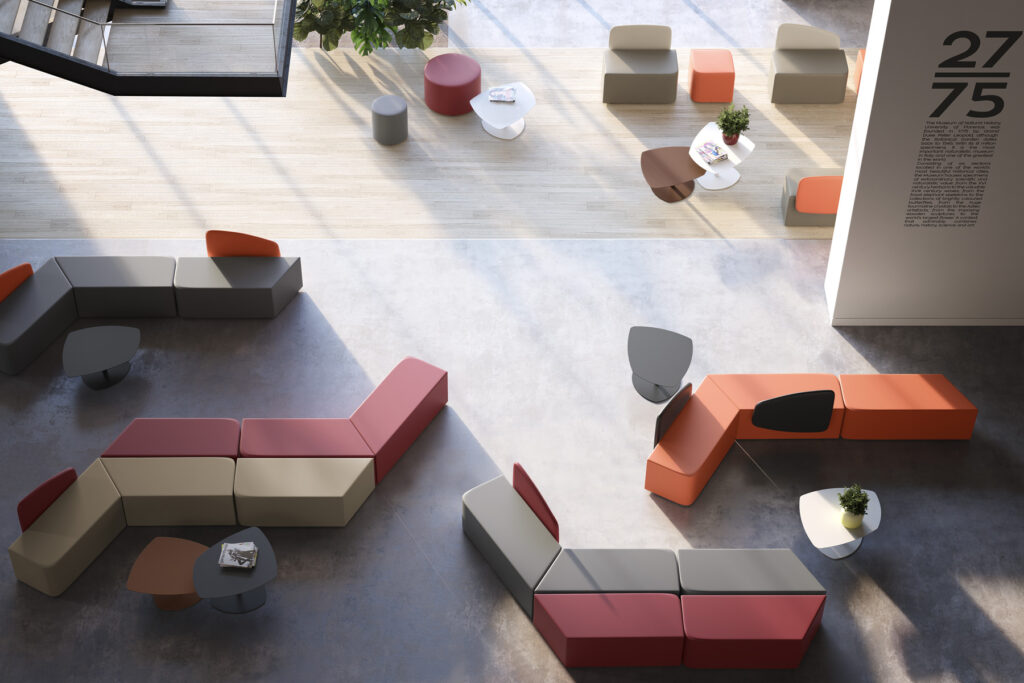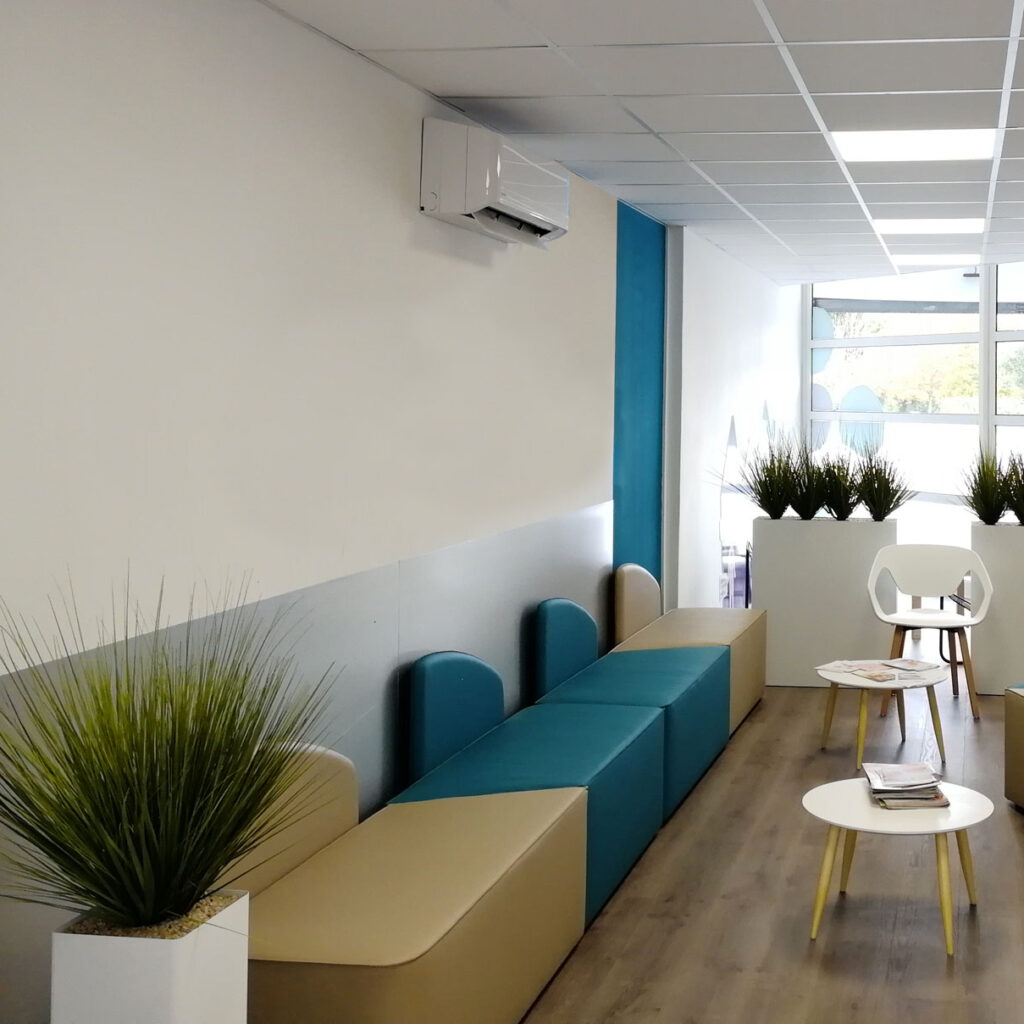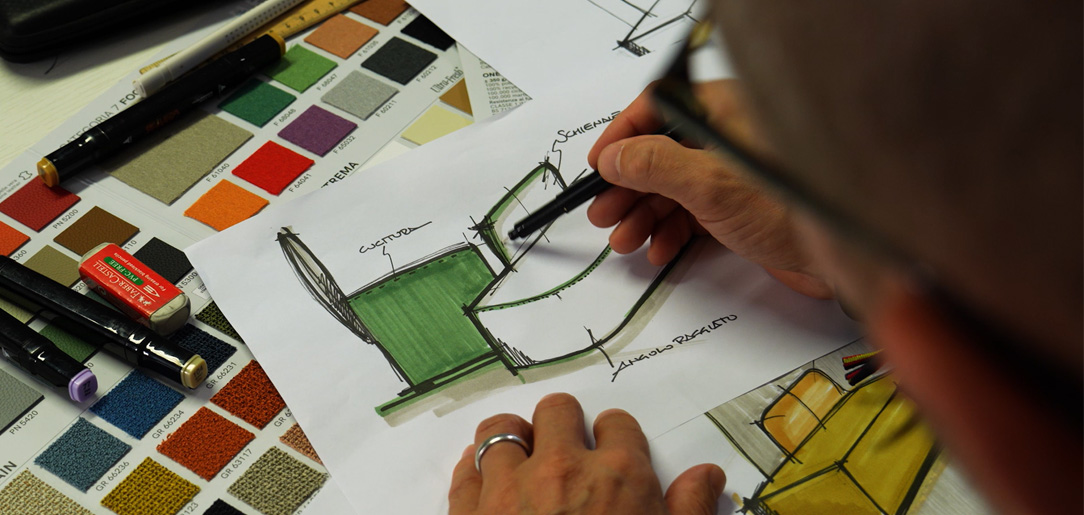In 2025 the Mantra collection, designed by Nicola Cacco for Sitlosophy®, celebrates its tenth anniversary. A milestone that highlights the strength of a project capable of anticipating and accompanying the evolution of shared spaces, from the workplace to hospitality, from education to healthcare.
Born from the intuition of translating the fluidity and natural movement of water waves into furniture, Mantra has established itself as a versatile modular system, combining formal essentiality, comfort, and virtually endless compositional possibilities. Its simple yet dynamic language has intercepted the growing need for more human, welcoming, and flexible environments, quickly becoming a benchmark for designers and architects.
On the occasion of this anniversary, we gathered the voice of its designer, who shares the design journey, inspirations, and transformations that have made Mantra a timeless collection—able to embrace ten years of changes without ever losing coherence and identity.

From geometry to movement: the birth of Mantra
Sitlosophy: What approach do you follow when designing a new product?
Nicola Cacco: Every time I face a new project, I adopt an approach that combines industrial rigor with artisanal sensitivity. I always start with an in-depth analysis of the functional aspects and the context of use, aiming to achieve an essential, flexible, and consistent design.
In the case of the modular pouf, collaboration with the company was crucial: we worked together to optimize the production process, focusing on quality, repeatability, and ease of assembly, while never neglecting the attention to detail and finishes typical of craftsmanship.
The result is a sober and functional product, well built, where industrial efficiency and manual care coexist harmoniously.
S: How was the idea for the Mantra seating system for Sitlosophy® born, and what was the path from initial intuition to the completed project?
N.C.: The idea of Mantra was born about ten years ago, from the desire to introduce greater modularity and flexibility into contract contexts. At that time, collective spaces tended to be too rational, static, and lacking warmth. I felt the need to propose a seating system capable not only of furnishing but of designing space, shaping and animating it through simple yet dynamic forms.
The project started from an elementary geometry, which progressively transformed into a right trapezoid: an open, non-orthogonal module that allows for infinite compositional possibilities. This choice made it possible to create fluid configurations, able to break the rigidity of traditional environments and stimulate new ways of experiencing and interacting within shared spaces.
The evolution from concept to final product was gradual, marked by punctual refinements in shape and detail, always guided by the desire to combine aesthetic coherence with functionality. Mantra thus defined itself as an open, versatile modular system, designed to interpret space—not just to occupy it.
S: Can you tell us where the inspiration for the Mantra sofa line came from?
N.C.: The inspiration for Mantra came from observing waves on the water during a walk along a lake. I was struck by how a small gesture—like throwing a stone—could generate ripples that propagate, intertwine, and form patterns that are always different yet profoundly harmonious.
That natural movement, made of repetition and variation, became the guiding principle of the project: a modular system that could “flow” through space, adapting and transforming with lightness.
Like water, Mantra is designed to connect, expand, and create ever-evolving compositions—an invitation to let space change and adapt with the same naturalness as nature itself.
S: What environments is the Mantra collection particularly intended for?
N.C.: Mantra was designed to inhabit shared and informal spaces: those transitional and relational places where people meet, talk, wait, or simply take a break. I’m thinking of entrance halls, lounge areas, open-plan offices, educational or cultural spaces—hybrid contexts where the boundaries between work, learning, and social interaction are increasingly blurred.
The system was created to foster flexibility and interaction, offering modular solutions that naturally adapt to the rhythm of contemporary spaces. The design, essential yet expressive, is conceived to encourage conviviality and a sense of community, generating welcoming and dynamic configurations that are always in dialogue with their environment.

The versatility of Mantra in contemporary spaces
S: Over the past ten years, and especially after the pandemic, the way we design workspaces has profoundly changed. In this new scenario, has the Mantra collection played an active role?
N.C.: Absolutely. The pandemic accelerated a transformation already underway: workplaces have become more fluid, less hierarchical, and increasingly oriented towards socialization and collaboration. In this context, Mantra has proven to be particularly relevant, because it was conceived precisely to create places of relationship, informal exchange, and dialogue.
Its modular character and the possibility of creating unconventional configurations have fostered the emergence of more open, welcoming, and—above all—more human environments. After a long period of forced isolation, the need to regain authentic, physical connections emerged strongly. Mantra has been able to interpret this demand, offering a concrete response in the design of spaces that promote encounter and sharing, while maintaining rigor, sobriety, and formal coherence.
S: Over the years, Mantra has also been chosen by designers for environments very different from workspaces: hospitality, healthcare, restaurants, or education. Do you think this evolution of use was unexpected? How do you interpret it?
N.C.: Originally, Mantra was created to respond to the needs of workspaces, particularly office common areas, where the need for informal environments dedicated to socialization and dialogue was emerging strongly. Over time, however, it has proven to be a surprisingly versatile collection, able to adapt naturally to very different contexts.
Rather than an unexpected evolution, I see it as a coherent continuation of a transversal need: today, the demand for comfort, flexibility, and sharing no longer concerns only the office world, but extends to all collective spaces. Whether it is a school, a hotel lobby, or a waiting area in healthcare, there is a growing focus on the quality of the spatial experience and on human relationships.
Mantra has been able to intercept this cultural shift, offering a simple and welcoming language, modular and recognizable, capable of fitting naturally and with character into very diverse environments.
S: Over time, has Mantra undergone changes or updates compared to the original project?
N.C.: Yes, over the years Mantra has experienced some evolutions, while remaining faithful to its initial concept. The most significant changes have involved the updating of finishes, with the periodic introduction of new fabrics and color palettes. This has made it possible to interpret contemporary trends and offer designers greater expressive freedom.
Another important step was the integration of technological components, such as the addition of USB sockets for charging mobile devices—a function that is almost taken for granted today, but which ten years ago was anything but common.
These updates have helped make the system even more relevant and consistent with the needs of new workplaces, increasingly dynamic, flexible, and interconnected.
S: In addition to traditional CAD models, Mantra has also been integrated into the pCon.planner catalog to support designers in the design phase. Do you think this has contributed to the system’s diffusion?
N.C.: Yes, definitely. The inclusion of Mantra in the pCon.planner catalog has had a significant impact, making design smoother and more accessible, especially in the early stages of concept and client presentation. Compared to traditional CAD models, pCon offers a more immediate, visual, and interactive approach, highly appreciated by those working quickly and dynamically.
Being a modular system, Mantra lends itself perfectly to these digital tools: it allows for the exploration of countless configurations with great ease, adapting space to the needs of each project. Its formal simplicity, combined with compositional flexibility, offers a creative freedom that designers know how to exploit.
I believe this very capacity for open interpretation is one of the reasons for Mantra’s success: every use is different, every setting an opportunity to let the product interact authentically and uniquely with its environment.
S:One last curiosity: where does the name Mantra come from?
N.C.: The name Mantra was conceived as an evocation. I wanted this modular system not to be perceived simply as a piece of furniture, but as an idea in motion—something that repeats, multiplies, and transforms. Just like a mantra, which through repetition generates harmony, rhythm, and continuity.
It is a name that speaks of balance and energy, and it perfectly represents the spirit in which the project was born: to shape a fluid, modular space capable of adapting while never losing coherence and identity.













